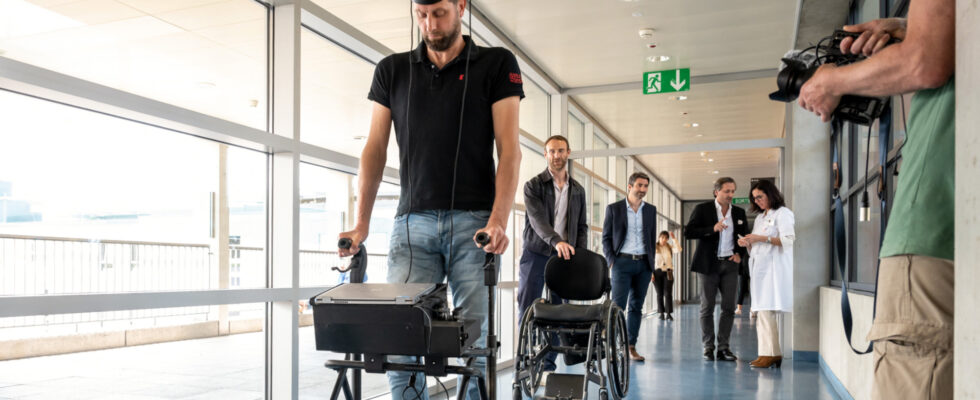Yasmina Kattou, edited by Laura Laplaud / Photo credit: FABRICE COFFRINI / AFP
modified to
07:38, May 25, 2023
For the first time, a man, whose legs have been paralyzed for more than ten years due to a bicycle accident, can again control the movement of his legs and the rhythm of his steps by thought. A scientific feat developed by French and Swiss researchers who publish their results in the journal “Nature”.
A paraplegic walks on both legs thanks to thought: this is a world first. French and Swiss scientists have enabled Gert Jan, a 40-year-old Dutchman with paralyzed legs, to walk again after a dozen years spent in a wheelchair after a bicycle accident. A feat whose results are published in the prestigious journal Nature. How does this technology work?
Restoring the link between the brain and the spinal cord with implants
For this to work, the link between the brain and the spinal cord had to be reestablished. For this, implants were placed on the surface of the brain, at the level of the area responsible for the movement of the legs. When the patient thinks of walking, the electrical signals generated by the brain are transmitted to a computer which decodes these signals, thanks to algorithms. The data is sent back to sensors located on the spinal cord. Simple thought is converted into movement in real time. The connection between the brain and the spinal cord, essential for walking, is then restored. The movement is natural, soft, which allows the patient a new daily life.
“This patient was able to evolve on complex terrains, that is to say being able to go outside, walk on varied environments, climb ramps, walk with crutches, climb stairs. This is the first time that a patient uses a brain-spinal cord interface as part of their daily life”, explains Guillaume Charvet, head of the brain-machine interface program.
A new clinical trial to restore hand and arm function
The researcher hopes that this technology can be generalized in the future. The scientific teams are preparing to launch a new clinical trial to restore this time the function of the hands and arms in quadriplegic patients.
